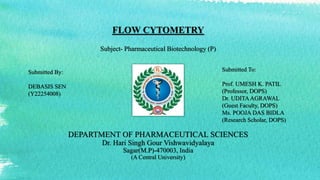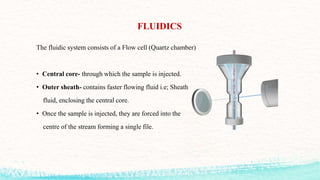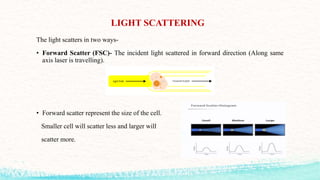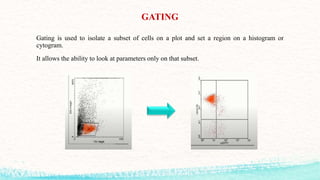Flow cytometry is a technique that uses lasers and fluorescence to count, examine, and sort cells suspended in fluid based on their optical and physical properties. Cells are stained with fluorescent markers and passed in a stream through a laser beam, which causes them to emit light at different wavelengths. Detectors then measure the light scattered and emitted to identify cell characteristics like size, granularity, and marker expression. Data is analyzed using software to identify cell populations and phenotypes. Flow cytometry has many applications in fields like immunology, hematology, and oncology for analyzing blood, tissue, and other cell samples.

























